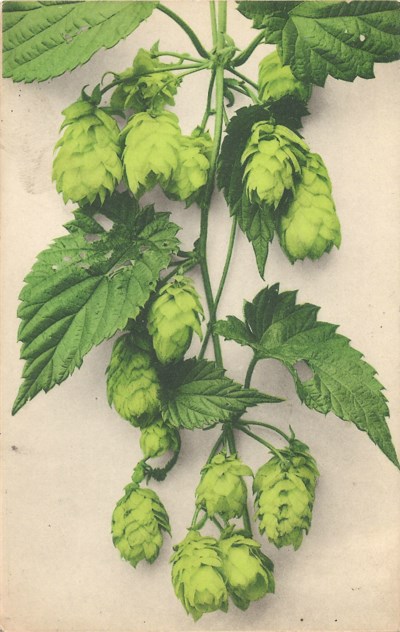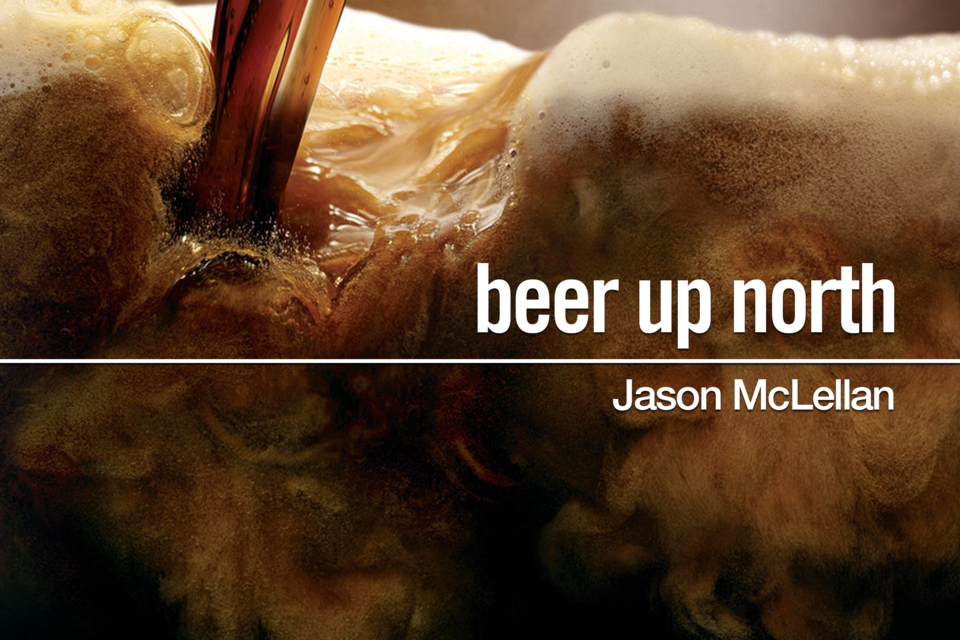It seems that it was around the early- to mid-1800’s when the market for beer shipped to India began to take off for British brewers who had fine-tuned the means to get classic English pale ale to survive the long ocean voyage to India in wooden kegs, a bit of a logistical nightmare given the duration of the journey and the hot climate of the South Atlantic and Indian oceans.
Part of the secret was to start the beer with a higher original gravity, that is to say with a higher malt to water ratio, so that the yeast could vigorously ferment the beer throughout the voyage to India; this likely resulted in a finished beer with an ABV of about 7 per cent.
 Hops on the vine. Photo by Jason McLellan for SooToday.
Hops on the vine. Photo by Jason McLellan for SooToday. Another key part of the formula was to aggressively hop the beer. Michael Jackson (the late, famous beer-writer) notes that this would have had the effect of deterring wild yeast populations from forming in the beer during the trip; I also imagine this would have masked some of the off-tastes that may have resulted from wild yeast contamination or from the effects of the hotter climate.
In any case, IPA was a smashing success in India, where it provided a taste of home and paired nicely with the spicy cuisine. If you ever research beer and food pairings, IPA and spicy curried dishes is one you’ll surely come across; you’ll also notice, if you ever visit the UK, that curry is commonly served at pubs.
Today, interpretations of IPA vary. In the UK, the beer will often be found to have a lower ABV (around 4 per cent) than it would’ve traditionally had; I believe this has to do with the UK’s alcohol taxation system. Here in Northern Ontario, we’re all too familiar with Alexander Keith’s IPA, an interpretation that may be easy to drink, but surely misses the mark; many of our northern brewers offer more authentic takes on the style.
For the most tenacious beer-hunter, Russian River Brewing Company in California makes Pliny the Elder, an 8 per cent ABV Imperial (double) IPA often heralded as one of the best beers in the world (I personally have never had the pleasure as I cannot find it in Ontario or on my occasional sojourns into the US).
At some point in your exploration of beer styles, you may have also noticed a dichotomy between English and American IPA. This has much to do with the hops that are used, where American IPA typically uses American-grown hops (particularly on the west coast) that lend more of a piney, citrusy taste to the beer than one would expect when using traditional British hops.
Whether it be in the English- or American-style, given the means by which IPA was traditionally brewed, ideally one should expect a stronger than average beer, almost copper in colour, and aggressively hopped; aging in wood casks would be an uncommon bonus. Strong, malty double IPAs offer a truly unique drinking experience that may fit the bill of authenticity the best.
If you’re really interested, pick up a copy of Pete Brown’s Hops and Glory – an account of one man’s quest to recreate the voyage of the IPA in modern times. It reads like a humorous travelogue, yet it imparts a wealth of knowledge on an important chapter in beer history.
As for myself, I’m taking another week off beer-writing to gather my thoughts, only so I can continue to bring you the quality brew stories you’ve come to expect from Beer Up North. I hope to see you back in two-weeks time!
Until then, stay cool.



